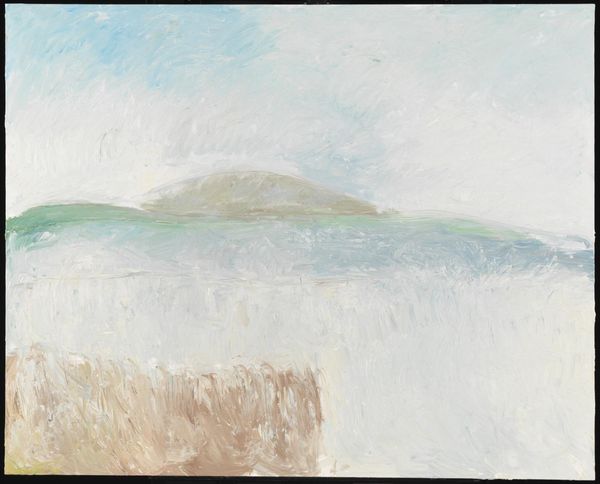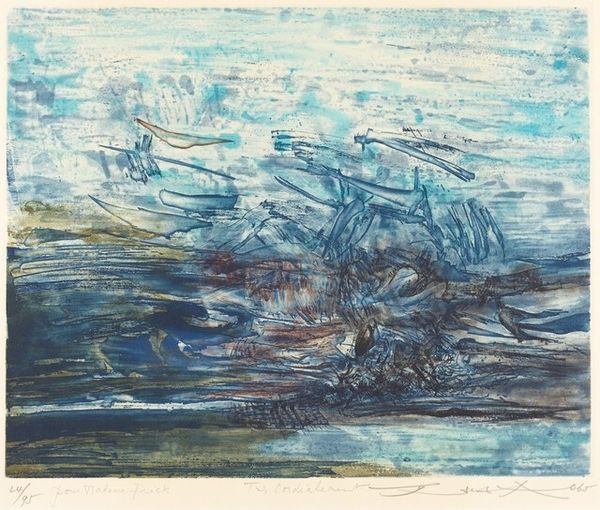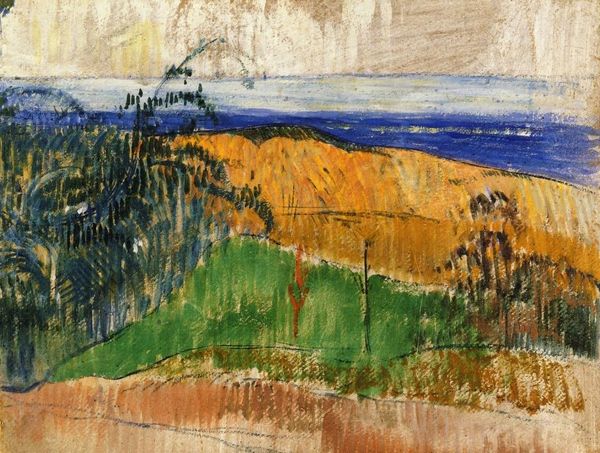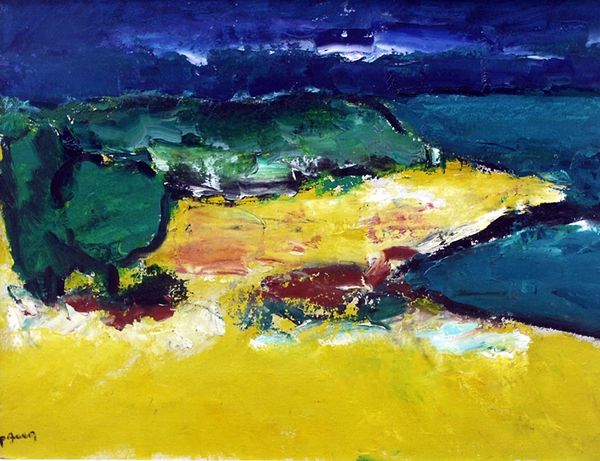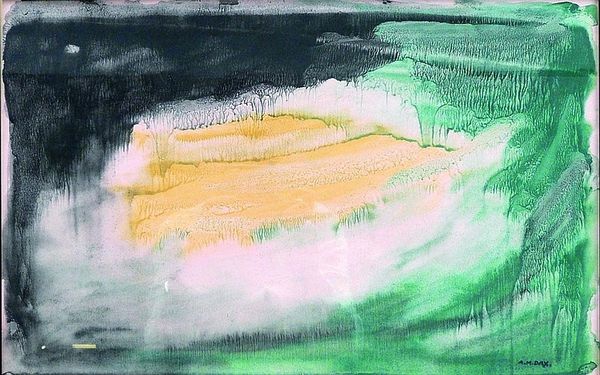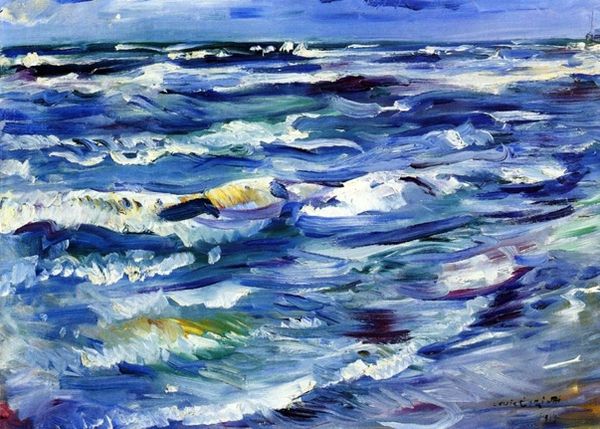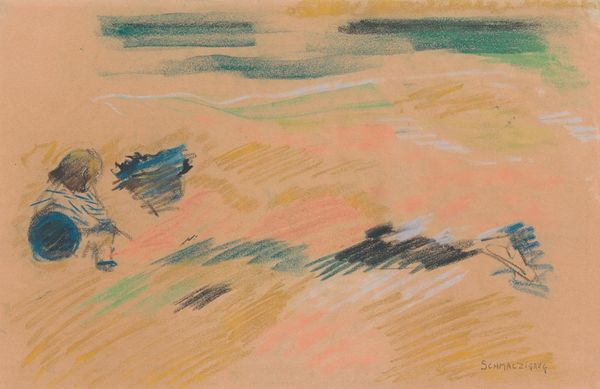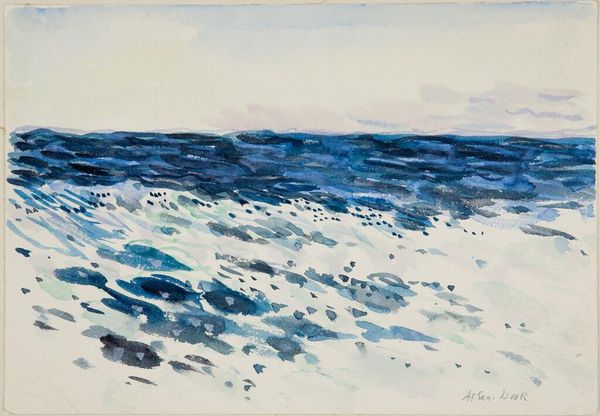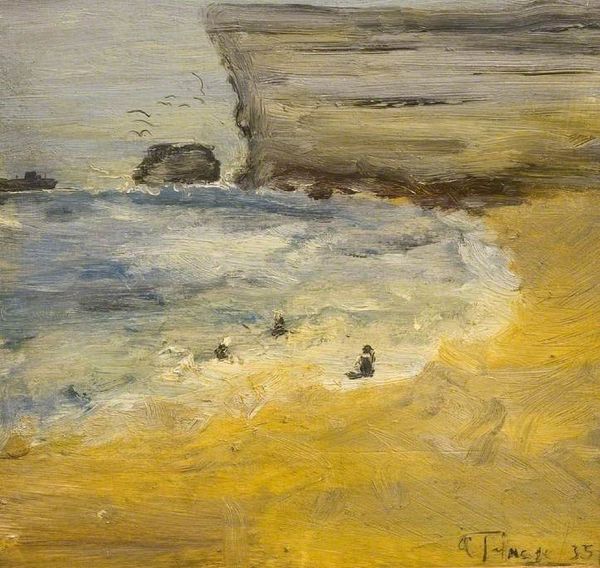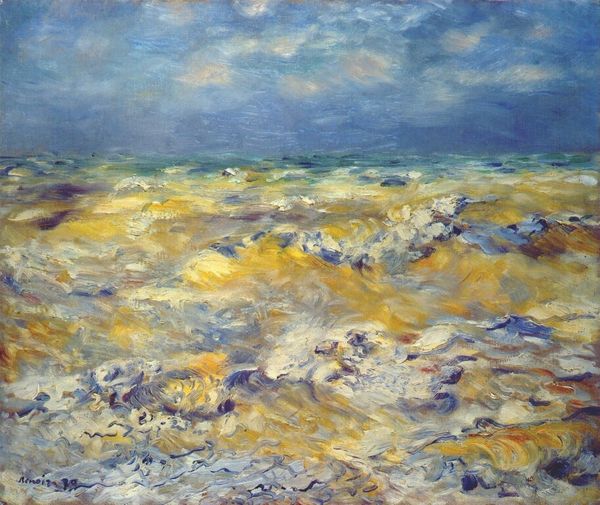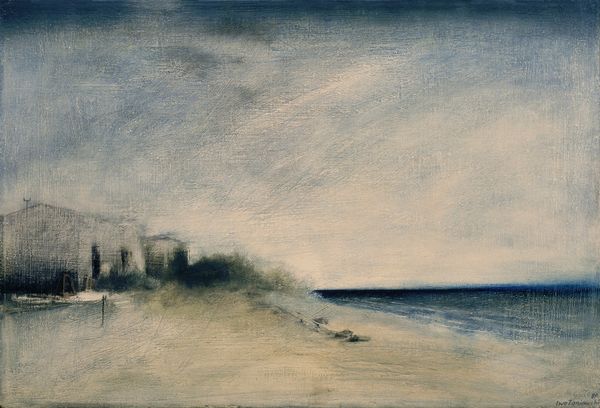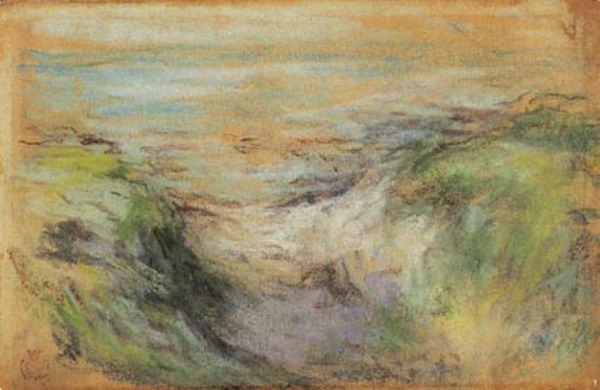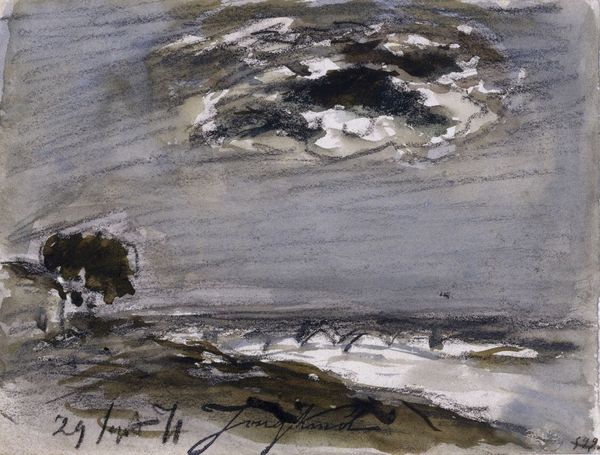
drawing, coloured-pencil, pencil
#
drawing
#
contemporary
#
coloured-pencil
#
landscape
#
figuration
#
pencil
#
line
Copyright: Ivan Albright,Fair Use
Editor: Here we have Ivan Albright's "Nags Head, Cape Hatteras" from 1974, a drawing created with coloured pencils and graphite. It looks almost dreamlike with its hazy colours and somewhat indistinct figures. What stands out to you from a formal perspective? Curator: Note how Albright manipulates the planar organization through tonal modulations of colour, disrupting the expected relationship between land, sea, and sky. There's a flattening of space, achieved by a web of layered lines that dissolve form into pure chromatic energy. Notice how the marks are restless, constantly agitated, never allowing the eye to settle. What effect does this create? Editor: It gives it a very ephemeral feeling, as if the whole scene could dissipate at any moment. The lack of defined lines definitely contributes to that. Curator: Precisely. Now, observe the artist's deployment of colour. He orchestrates a chromatic symphony, but one that refuses traditional notions of representation. What visual effects emerge from the combination of pastel-like colours with scratchy application? Editor: I guess the roughness prevents the colours from blending, giving the whole picture an almost unfinished appearance, though I suppose that could be deliberate. Curator: Exactly. By avoiding any overt realism, Albright emphasizes the drawing's existence as an object in itself. The scene, the supposed subject, is only the vehicle for the deployment of his artistic method, one built from formal relationships and techniques. This methodology promotes visual activity for viewers. Editor: I see it now, the visual energy overshadows the representation itself! I didn't notice at first how many individual lines build up the entire drawing. Thanks for making me see this artwork in a new light.
Comments
No comments
Be the first to comment and join the conversation on the ultimate creative platform.
